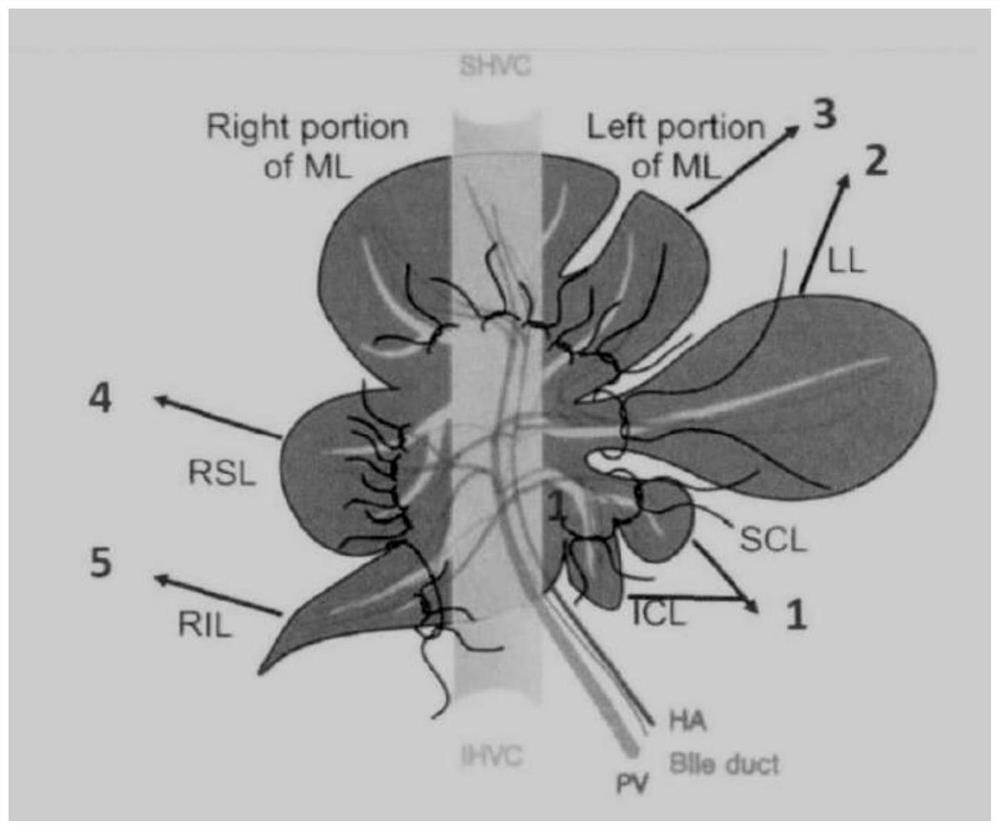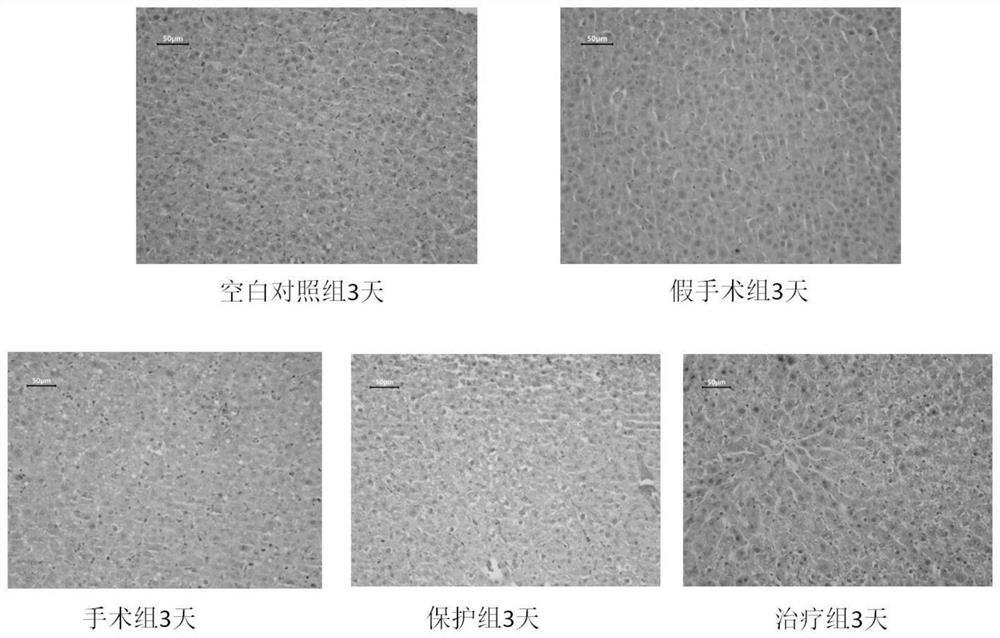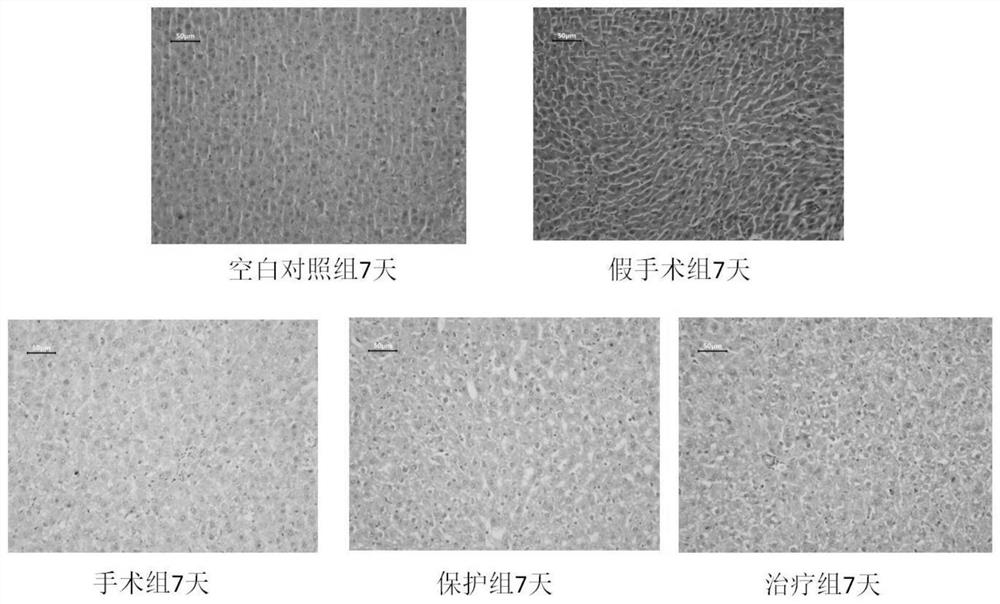Application of lactobacillus plantarum in promoting liver regeneration
A technology of Lactobacillus plantarum and liver regeneration, which is applied in the field of microorganisms, can solve the problems of unclear influence on liver regeneration ability, and achieve the effects of promoting liver function recovery, liver regeneration ability, and liver regeneration
- Summary
- Abstract
- Description
- Claims
- Application Information
AI Technical Summary
Problems solved by technology
Method used
Image
Examples
Embodiment 1
[0020] Embodiment 1: the cultivation of Lactobacillus plantarum
[0021] (1) MRS medium: glucose 20g, beef extract 10g, peptone 10g, yeast extract 5g, anhydrous sodium acetate 5g, dipotassium hydrogen phosphate 2g, diammonium hydrogen citrate 2g, manganese sulfate 0.25 g, magnesium sulfate 0.5g , Tween-80 1ML, (add 20g of agar to the solid medium) 1000mL of distilled water, adjust the pH to 6.2, and sterilize by autoclaving at 121°C for 20min.
[0022] (2) Activation of lactic acid bacteria
[0023] Pick an appropriate amount of screened lactic acid bacteria and inoculate them into 10mL MRS for primary culture, and place them in a 37°C constant temperature incubator for 20 hours, then add them to 90mL MRS liquid medium for secondary culture, and place them in a 37°C constant temperature incubator for 24 hours . After centrifugation, the supernatant medium was removed, and the pellet was reconstituted with 1 ml of physiological saline, and then plated. The results show that ...
Embodiment 2
[0024] Example 2: Liver regeneration experiment
[0025] 1. Construction and grouping of animal models with partial liver resection
[0026] Carry out 70% liver resection with reference to the Higgns-Anderson method, and specific process is as follows: 4% chloral hydrate intraperitoneal anesthesia (0.6-0.8ml / 100g); Rat is fixed on the operating table, after abdomen iodine disinfection, median incision is opened Abdomen, free perihepatic ligament; Gently move the abdominal viscera to the left, wrap it in wet gauze (soaked in normal saline), fully expose the liver; use 6.0 silk surgical knotting method to ligate the corresponding liver part, after confirming that there is no bleeding, use a micro The lobes of the liver were cut and removed; finally, the peritoneal and skin incisions were continuously sutured with 3.0 silk sutures to keep warm. Partial resection of 70% or less of the liver can be performed according to the above method.
[0027] The specific groups are as follo...
Embodiment 3
[0056] Example 3: Liver function recovery experiment after partial hepatectomy
[0057] 1. Construction and grouping of animal models with partial liver resection
[0058] Same as Example 2
[0059] 2. Method
[0060] 5ml of blood was collected from the inferior vena cava, and after 15 minutes at room temperature, 3000rpm, the serum was collected, and an automatic biochemical analyzer was used to measure alanine aminotransferase (ALT), aspartate aminotransferase (AST), total bilirubin (total bilirubin) , TTB) and other indicators reflect the damage of liver function. see results Figure 5 .
[0061] Figure 5 It showed that in terms of protein synthesis, the concentrations of total protein (TP), albumin (ALB) and globulin (GLo) in the serum of rats in the partial hepatectomy operation group, AR113 Lactobacillus protection group and AR113 Lactobacillus treatment group for 3 days were normal Groups (CK3 and CK7) and prosthetic hand group (JSH) both decreased. Compared wit...
PUM
 Login to View More
Login to View More Abstract
Description
Claims
Application Information
 Login to View More
Login to View More - R&D
- Intellectual Property
- Life Sciences
- Materials
- Tech Scout
- Unparalleled Data Quality
- Higher Quality Content
- 60% Fewer Hallucinations
Browse by: Latest US Patents, China's latest patents, Technical Efficacy Thesaurus, Application Domain, Technology Topic, Popular Technical Reports.
© 2025 PatSnap. All rights reserved.Legal|Privacy policy|Modern Slavery Act Transparency Statement|Sitemap|About US| Contact US: help@patsnap.com



